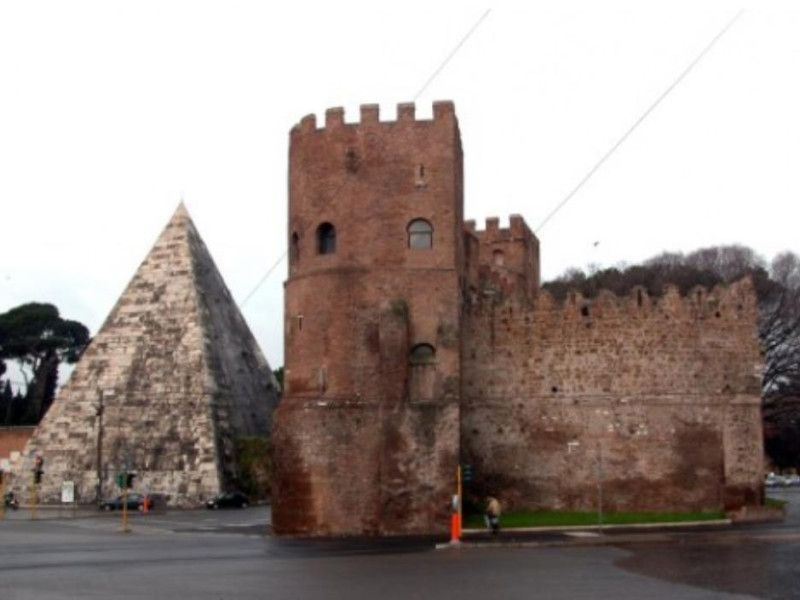Museo della Via Ostiense - Porta San paolo
Porta San Paolo is part of the Aurelian walls built by Emperor Aurelian in 275 AD and presents itself as among the best preserved of all city walls. The present name was given in the Middle Ages because of the proximity to the Basilica of St. Paul reached through the Via Ostiense, which began its journey to Ostia own this port.
In the original phase consisted of two twin arches with two semicircular towers. Restorations and renovations were carried out under the emperors Maxentius (AD 306-312) and Honorius (401-403) by changing the aspect that currently exhibits an arched entrance and an inner door with two arches. The door also underwent alterations later. During the Greek-Gothic war, in 594 A.D. from there went to Rome the Goths of Totila. The door now appears isolated, but it was originally connected to the section of the Aurelian Walls coming down the hill of San Saba to the pyramid of Caius Cestius. Was isolated from the walls already in 1920 to facilitate traffic in the square, while the part of the wall that connected to the Pyramid was destroyed during the bombing of 1943.
Today the port is home to the Museum of Via Ostiense made in 1954 to illustrate the topography of the area between Rome and Ostia, in fact, in Roman times was marked by the important road axis of the Via Ostiense. In it are preserved material from that area to go arcosolia identifying three paintings from a tomb of the third century AD at the Basilica of St. Paul and numerous casts of inscriptions and memorial stones. At the first level of the two towers are exposed to two major models, performed by Italo Gismondi, who represent the ancient city of Ostia and the complex of imperial harbors of Claudius and Trajan. In the eastern tower there are remains of frescoes dating from the late thirteenth and early fourteenth century. that decorated a chapel in which gathered a community Byzantine.
Fonte: Wikipedia

